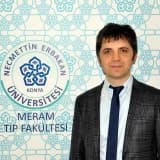Use of Complementary and Alternative Medicine in Children with Autism Spectrum Disorders: A Multicenter Study.

INTRODUCTION:
This study examined the prevalence of the use of different complementary and alternative medicine (CAM) strategies, families' attitudes and belief systems about the use of these strategies, and the economic burden of these strategies placed on family income in families of children with autism spectrum disorders (ASD).
METHOD:
A questionnaire survey concerning the use of CAM in children with ASD was administered to parents in the five different geographic locations in Turkey.
RESULT:
Of the 172 respondents, 56% had used at least one CAM therapy. The most frequently used CAM intervention was spiritual healing. Among the most reported reasons for seeking CAM were dissatisfaction with conventional interventions and a search for ways to enhance the effectiveness of conventional treatments. The most frequently reported source of recommendation for CAM was advice from family members. The mean economic burden of the CAM methods was a total of 4,005 Turkish lira ($2,670) in the sample using CAM. The CAM usage rate was lower in parents who suspected genetic/congenital factors for the development of ASD.
CONCLUSION:
This study observed the importance of socioeconomic and cultural factors as well as parents' beliefs about the etiology of ASD in treatment decisions about CAM.
